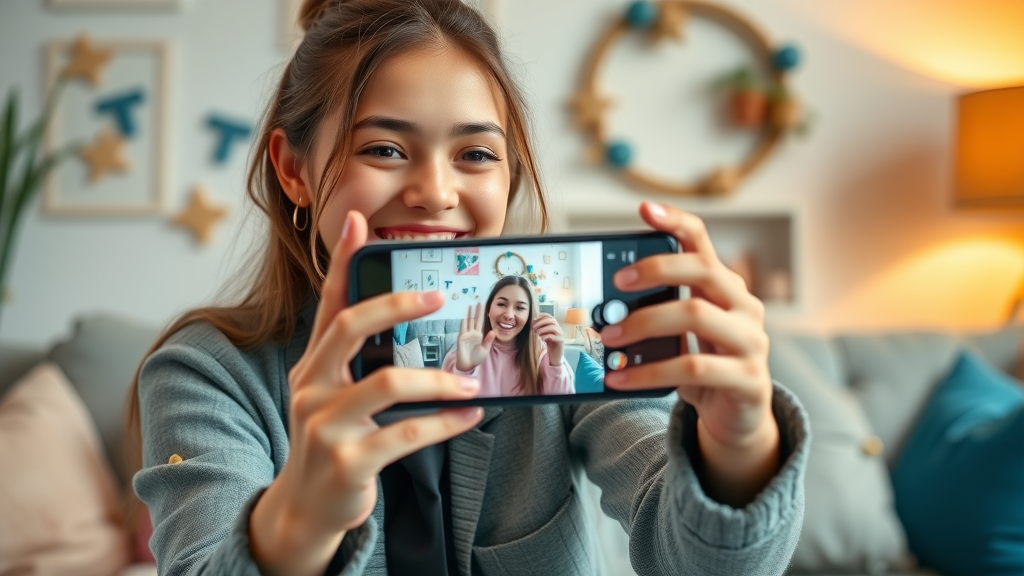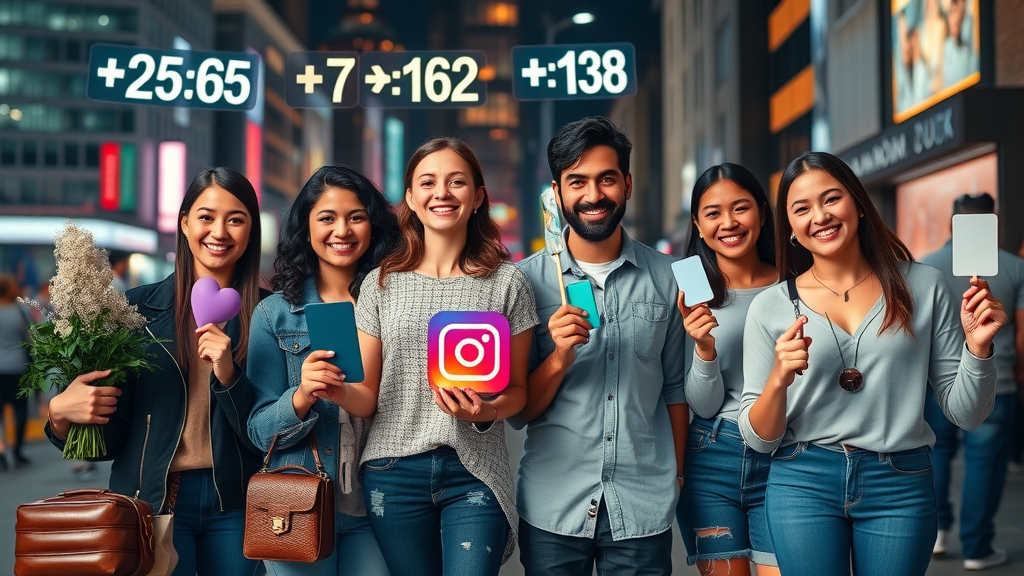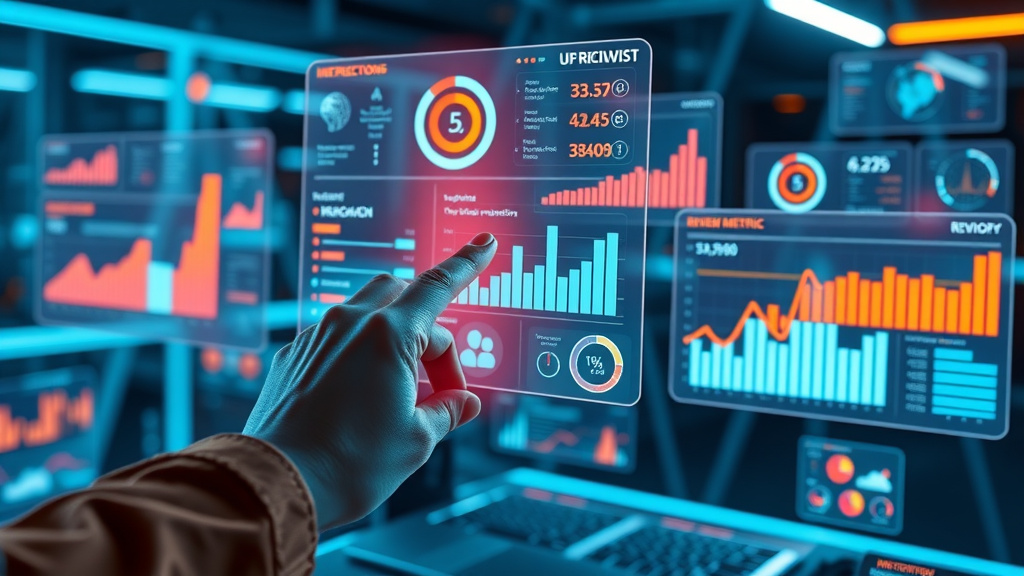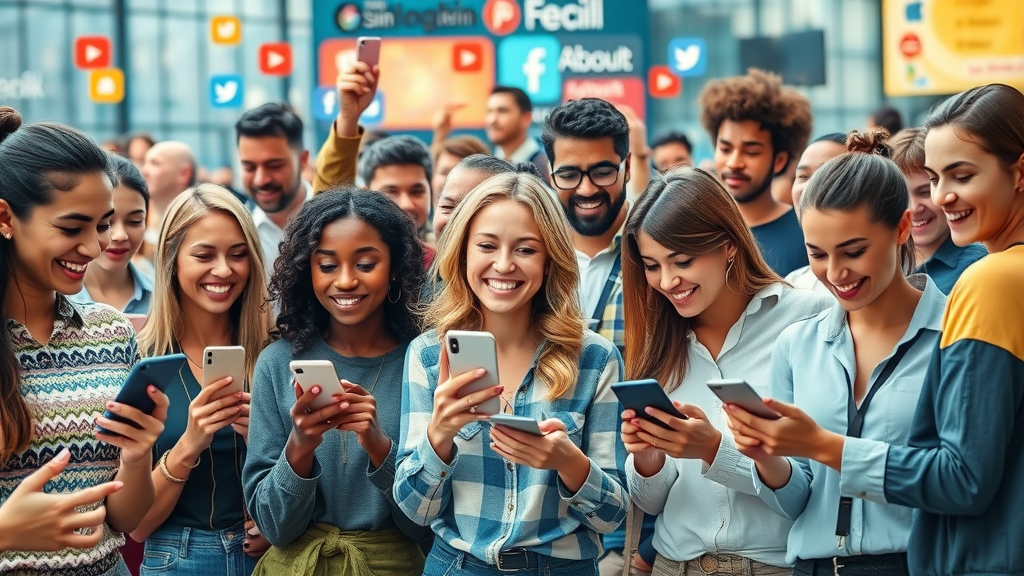Did you know that businesses make $6.50 for every $1 spent on influencer marketing? That’s a return on investment that rivals—if not surpasses—almost every other digital marketing channel! In today’s crowded digital space, influencer marketing is the fastest-growing way for brands to skyrocket their sales, turbocharge engagement, and instantly expand their reach on social media. Whether you’re a start-up or an enterprise brand, tapping into the trust and reach of media influencers is no longer a secret weapon—it’s essential strategy. If you want actionable tips, proven steps, and expert insights, this comprehensive guide will show you exactly how to leverage influencer marketing to win big—fast.
Revealing the Power of Influencer Marketing: Startling Stats & Game-Changing Facts
Influencer marketing has become a driving force in the digital marketing world, and the stats back it up. According to recent surveys, over 80% of marketers say influencer marketing is highly effective in driving brand growth. This robust confidence reflects how influencer campaigns are reshaping media marketing, offering brands unprecedented access to highly engaged audiences across every popular social media platform.
With content creators and social media influencers producing relatable, high-value content, brands are witnessing record-high engagement rates, improved brand awareness, and significant increases in sales. In fact, influencer marketing platforms have made it simple to find, track, and manage collaborations, solidifying influencer marketing as a central pillar in modern marketing strategies. The shift from hard-sell tactics to authentic influencer partnerships is one key reason influencer marketing campaigns consistently outperform traditional digital advertising and other social media marketing efforts.

The Evolution of Social Media and Influencer Marketing
In just the last decade, social media marketing has transformed how brands and consumers connect. The rise of platforms like Instagram, TikTok, and YouTube created fertile ground for influencer marketing—a new frontier where everyday users, passionate experts, and celebrities build communities and shape trends. Influencer marketing is a natural evolution, leveraging the authentic connections social media influencers already have with their followers. Brands quickly realized partnering with trusted figures—media influencers—leads to higher credibility and engagement than traditional digital marketing ads.
From simple product mentions to immersive content creation campaigns, influencer marketing strategies have matured. Today, influencer marketing campaigns are not just about reach—they're about building relationships, sparking genuine conversations, and fueling content that resonates. With influencer marketing hubs and platforms streamlining partnerships and measurement, it's never been easier to integrate influencer marketing into your brand awareness strategy.
As you refine your influencer marketing approach, it's also worth exploring how emerging and niche social media platforms can offer untapped opportunities for brand growth. For a closer look at platforms you might be overlooking, check out these social media channels you’re missing out on today and discover where your next audience may be waiting.
"Over 80% of marketers find influencer marketing highly effective in driving brand growth—reflecting its meteoric rise in the digital marketing strategy landscape."
What You’ll Learn About Influencer Marketing
- How influencer marketing transforms your marketing campaigns
- Key elements of a winning influencer marketing strategy
- Practical steps to launch successful influencer marketing campaigns
- Identifying the right influencer marketing platform
- Understanding metrics and engagement rates for influencer campaigns
Defining Influencer Marketing: What Is It and Why Does It Matter?
Influencer marketing is a collaborative strategy where brands partner with social media influencers—trusted voices on platforms like Instagram, YouTube, and TikTok—to promote products or services authentically. Unlike traditional social media marketing, influencer marketing relies on the credibility, reach, and authority of media influencers who foster deep trust with their followers. This form of digital marketing has exploded because it delivers believable, peer-recommended content, which often outperforms paid ads in conversion rates and engagement.
Why does influencer marketing matter so much? The answer lies in today’s marketplace: consumers have grown weary of generic ads and crave real-life recommendations from people they admire. A well-crafted influencer marketing strategy capitalizes on this shift, escalating brand awareness, driving targeted marketing campaigns, and propelling sales further than conventional tactics. When brands align with the right social media influencer, they not only earn trust but also tap into vibrant digital communities ready to engage.

Influencer Marketing vs Traditional Social Media Marketing
The distinction between influencer marketing and traditional social media marketing comes down to trust, reach, and content creation. While classic social media marketing is brand-driven and often relies on paid ads or company-controlled posts, influencer marketing pivots the spotlight onto individuals who have organically cultivated loyal followings. With influencer marketing campaigns, brands leverage the unique storytelling and authenticity of media influencers, rather than pushing uniform messages.
This generates higher engagement rates, as audiences feel more connected with influencers than with faceless corporate pages. In contrast, traditional digital marketing can struggle to cut through the noise. Integrating influencer campaigns with your social media marketing hub enhances your strategy’s reach, making your marketing efforts more personable and relatable—and ultimately more effective.
Why Influencer Marketing Should Be Core to Your Digital Marketing
Today’s digital marketing landscape is hyper-competitive, and brands that don’t include influencer marketing in their core strategy risk being left behind. Influencer marketing amplifies your brand’s voice across popular social platforms, making your marketing campaigns more memorable and impactful. Not only does it increase brand awareness, but a strong influencer marketing strategy also cultivates communities, grows engagement rate, and drives sales through authentic endorsements.
The direct access to niche audiences, the flexibility in content creation, and the ability to scale your influencer marketing campaign quickly make this approach indispensable. By working with media influencers who align with your brand’s message, you can launch creative campaigns, set clear KPIs, and track real ROI—which is what modern digital marketing is all about.
The Benefits of an Effective Influencer Marketing Strategy
A well-executed influencer marketing campaign offers advantages that go far beyond basic product promotion. When you integrate influencer marketing into your core marketing strategy, the ripple effects spark higher brand awareness, more meaningful engagements, and better conversion rates. Influencer marketing campaigns help brands tell their story in an authentic voice, resonating powerfully on every social media platform. This approach also paves the way for long-term partnerships and a steady flow of fresh, engaging content.
Key benefits include: expanding your audience to previously unreachable markets, strengthening trust through genuine influencer recommendations, and leveraging the content creativity of media influencers. In fact, brands with sustained influencer marketing strategies often enjoy repeat engagement and word-of-mouth amplification that outpaces even advanced digital advertising campaigns.
Elevating Brand Awareness and Expanding Social Media Reach
Influencer marketing is one of the most effective methods for building instant brand awareness and connecting with wider audiences. Social media influencers bring their loyal, engaged followers directly to your digital doorstep, sharing your message in ways that drive emotional resonance. For brands wanting to break through saturated digital marketing spaces, influencer campaigns offer unmatched access to target demographics and untapped communities, propelling brand visibility sky-high.
The reach of a successful influencer marketing campaign isn’t limited to one platform or moment. The best influencers leverage multi-platform engagement, meaning your brand appears where your ideal customers already spend their time—be it Instagram, TikTok, YouTube, or beyond. More than simply broadcasting a message, influencer marketing fosters a two-way relationship where followers see your products woven into entertaining, trustworthy, and memorable content.

Driving Engagement Rate and Conversions in Your Marketing Campaign
The engagement rate—how often followers interact with a creator’s content—is the heartbeat of any successful marketing strategy. Influencer marketing outperforms most digital marketing channels for engagement, as followers are more likely to like, comment, share, and purchase based on trusted recommendations. Combining authentic content creation with strategic calls to action, brands can convert awareness into action more effectively than with standard advertising.
Successful influencer marketing campaigns also produce measurable spikes in website visits, lead generation, and direct sales. By aligning campaign objectives and KPIs with influencer marketing metrics, brands can see exactly how influencer efforts translate to ROI. Modern influencer marketing platforms make tracking engagement rates and conversions seamless, ensuring that every collaboration leads to concrete, data-backed results.
Building a Sustainable Influencer Marketing Campaign
Creating a long-lasting influencer marketing campaign starts with a clear vision and well-defined steps. A sustainable approach means focusing not just on one-off viral moments but on cultivating enduring relationships—with influencers and their audiences alike. Brands that prioritize transparency, value-driven partnerships, and consistent messaging nurture loyalty and ensure continued digital marketing success.
By understanding what makes influencer marketing strategies thrive—like thoughtful content creation, smart objective setting, and open communication—your campaign becomes more than a trend. It becomes a powerful engine for continuous growth within your marketing hub, setting new standards for brand awareness and engagement rate.
Elements of a Successful Influencer Marketing Campaign
The foundation of any winning influencer marketing campaign is a fusion of authenticity, creativity, and data-driven execution. Choosing influencers who genuinely align with your brand values is as important as selecting the right social media platform for your message. Next, it’s critical to provide detailed content creation briefs, set expectations, and offer creative freedom so influencers can showcase your products or services in a way that resonates organically.
Sustained marketing campaigns thrive on feedback loops—transparent reporting, robust collaboration tools, and regular check-ins. Leveraging influencer marketing hubs or platforms can streamline this process, providing analytics and communication in one place. Remember: A great influencer marketing strategy doesn’t end at launch—it evolves through optimization, ongoing influencer collaboration, and a focus on real engagement rates and campaign results.
Setting Objectives and KPIs for Influencer Marketing Campaigns
Before launching your influencer marketing campaign, set clear objectives and measure performance with specific KPIs. Are you aiming to boost brand awareness, spike your engagement rate, or increase website conversions? Each goal requires tailored metrics—impressions for visibility, likes/comments for engagement, and sales or leads for conversion.
Using marketing platforms with analytics dashboards, you can track these KPIs in real-time, refining your strategy as you go. Consistently reviewing your influencer campaign performance is what separates good marketing efforts from great ones. Below, explore the essential campaign objectives and measurement tools:
| Campaign Objective | Example KPI | Measurement Tool |
|---|---|---|
| Brand Awareness | Impressions | Analytics Platform |
| Engagement | Likes/Comments | Platform Dashboard |
| Conversion | Sales/Leads | CRM Reports |

Types of Influencers in Modern Influencer Marketing
Understanding the different types of influencers is crucial for aligning your influencer marketing strategy with campaign goals. Each category—nano, micro, macro, and mega—influencers—offers unique benefits in reach, engagement rate, and community connection. A well-rounded marketing campaign may incorporate multiple types of influencers to maximize brand awareness, content creation, and return on investment. The right mix helps brands connect authentically across diverse audiences, from tight-knit micro-communities to mainstream markets on popular social media platforms.
Choosing the correct influencer type often depends on your objectives, budget, and industry. For example, nano-influencers (1K–10K followers) are ideal for grassroots product launches, while mega-influencers (1M+ followers) spark instant viral buzz. Partnering with a spectrum of media influencers allows for flexible and dynamic digital marketing campaigns that adapt to changing trends and audience preferences.
Understanding Types of Influencers: Nano, Micro, Macro, Mega
- Nano-influencers (1K–10K followers)
- Micro-influencers (10K–100K followers)
- Macro-influencers (100K–1M followers)
- Mega-influencers (1M+ followers)

Choosing the Right Social Media Influencer for Your Campaign
Not all influencers are created equal. The secret to a high-performing influencer marketing campaign lies in finding social media influencers whose style, values, and audience align with your brand. Consider evaluating an influencer’s credibility, past sponsored content, engagement rate, and audience demographics. Using a dedicated marketing platform, streamline searches and vet profiles with precision. Remember, authentic influencer collaboration leads to content that feels real—not forced.
Media influencers who genuinely use and love your products or services will always deliver the most powerful, share-worthy content. Building lasting relationships with these influencers deepens trust, cultivates ongoing brand awareness, and keeps your brand top-of-mind in rapidly shifting digital marketing spaces.
"Choosing the right influencer is like selecting the face of your brand on social media."
Launching Your First Influencer Marketing Campaign
Launching a successful influencer marketing campaign requires careful planning, collaboration, and creativity. Begin by defining your marketing campaign goals: Are you looking to drive sales, increase brand awareness, or grow your social media followers? With clear objectives in place, identify the right influencers using a marketing hub or dedicated influencer marketing platform. Open, honest outreach and detailed content creation briefs are key to fostering successful partnerships with media influencers.
Remove guesswork by using proven systems for influencer campaign management, from content schedules to monitoring tools. Every strong influencer marketing strategy hinges on mutually beneficial relationships where content creators feel empowered to showcase your brand with their unique voice. Below, we outline essential steps for launching, managing, and optimizing your first influencer campaign.
Developing an Influencer Marketing Strategy Aligned with Your Brand
Crafting a tailored influencer marketing strategy starts with deep research into your brand’s audience and core messaging. Determine what makes your product stand out and which social media influencers can communicate that value authentically to their followers. From there, outline content creation guidelines that allow for creative expression within the boundaries of your brand’s voice.
A winning marketing strategy for influencer outreach includes setting clear campaign goals, defining KPIs, and plotting out a content calendar aligned with key moments—like launches, holidays, or events. Ongoing collaboration between your brand and influencers ensures each piece of content feels fresh, relevant, and powerful for driving real engagement rates.

Identifying and Reaching Out to Media Influencers on Marketing Platforms
Your influencer marketing hub or platform should serve as mission control for finding, evaluating, and reaching out to the right social media influencers. Start by filtering for platform, niche, engagement rate, and past campaign performance. Once you’ve shortlisted influencers, craft personalized outreach messages that highlight shared values and propose a compelling partnership offer.
Successful influencer marketing campaigns are built on transparency and mutual respect. Address contract terms, compensation, deliverables, and content creation guidelines upfront to minimize misunderstandings and build long-term relationships. Well-managed outreach sets the stage for impactful influencer collaboration—one that can spur both immediate and repeat marketing campaign wins.
Crafting Content Creation Briefs for Influencer Marketing
A content creation brief is a roadmap for influencers, clearly articulating your campaign's vision, tone, and objectives without stifling creativity. Specify the target audience, key messages, hashtags, posting guidelines, and preferred content types—such as stories, videos, or static posts—ensuring the output aligns with your brand’s identity. However, flexibility is crucial; allow the influencer’s personality and style to shine through for greater authenticity and engagement rate.
Review each influencer’s strengths and let them customize the format where possible. The following table offers guidance on matching content types, platforms, and campaign objectives:
| Content Type | Recommended Platform | Objective |
|---|---|---|
| Unboxing video | YouTube | Drive Engagement |
| Instagram story | Brand Awareness | |
| Blog post | Personal Blog | SEO/Lead Generation |
Top Influencer Marketing Platforms to Amplify Your Social Media Strategy
The right influencer marketing platform acts as a one-stop marketing hub, making it easier to find, evaluate, and manage influencers for your next campaign. The best platforms offer robust search filters, automated analytics, seamless communication tools, and secure payment management all in one interface. This streamlines campaign launch, speeds up influencer collaboration, and ensures your team spends less time on logistics and more time on strategy and content creation.
Some platforms specialize in niches—like B2B digital marketing or lifestyle products—while others offer massive reach across every major social media platform. Evaluate based on your brand’s needs: Does the platform provide valuable engagement rate insights? Can it manage influencer contracts and deliverables? Choosing the right tool can make or break your influencer marketing campaign’s efficiency and effectiveness.
Comparing Influencer Marketing Platforms: Features & Benefits
Not all influencer marketing platforms are created equal. Key feature comparisons include influencer search granularity, integrated content creation tools, campaign tracking dashboards, real-time analytics, contract automation, and multi-platform compatibility. User-friendly marketing hubs that include payment gateways and communication feeds dramatically cut down on administrative time and reduce errors in your influencer marketing campaigns.
Seek out platforms that provide deep performance analytics—tracking every stage of your campaign, from brand awareness to conversion rates. The ability to assess engagement rates, influencer audience demographics, and past campaign outcomes empowers brands to continually refine their influencer marketing strategy for better ROI with every campaign iteration.

How to Evaluate a Marketing Platform for Your Influencer Campaign
- Platform reach: Does it offer access to the influencers and niche markets you need?
- Content creation tools: Are there integrated features for collaboration, review, and scheduling?
- Analytics and engagement tracking: Can you monitor KPIs, audience data, and campaign ROI in real-time?
- Payment and contract management: Does it simplify invoicing, contracts, and regulatory disclosures?
Optimizing Content Creation for Influencer Marketing Success
The heart of every influencer marketing campaign lies in creative, engaging content that captures attention and inspires action. Brands that succeed know how to empower their media influencers to develop original, relatable, and visually appealing posts. This involves a balance—providing a clear campaign framework but also encouraging influencers to showcase their unique voice and perspective. Invest in content creation workshops, brainstorms, or co-creation sessions to brainstorm content ideas and formats tailored to trending topics and shifting audience tastes.
In addition to originality, optimized content incorporates strong calls to action, timely posting schedules, and rigorous hashtag research for greater reach on popular social media platforms. Consistent communication and feedback with content creators help refine future influencer marketing strategies and keep engagement rates high.
Content Creation Tips from Successful Social Media Campaigns
Learn from the best! Leading brands embrace influencer content creation tips like these: Focus on storytelling, not just features; highlight everyday product usage; tap into platform-specific content trends (like Instagram Reels or TikTok challenges); and co-create with your influencer to make each marketing campaign feel unique. Use high-quality visuals, infuse branded items naturally, and experiment with interactive content (polls, Q&As, or giveaways) to boost engagement rates.
Encouraging creative risks often results in more authentic, viral media content. Collaborate on behind-the-scenes looks or “day-in-the-life” series, and always analyze results via your marketing hub to see what content style resonates most with your audience.

Collaborating with Content Creators for Higher Engagement Rate
Successful influencer collaboration is anchored by trust. Encourage ongoing dialogue—solicit content ideas from influencers and involve them in campaign strategy discussions. Influencers who feel valued and trusted produce higher-quality, more shareable media content, resulting in greater engagement rates. Regular check-ins, milestone reviews, and shared post-campaign analyses solidify long-lasting, productive influencer marketing partnerships.
It’s also smart to create private digital communities or online workspaces where influencers can share tips, provide feedback, and foster camaraderie. These relationships often produce unexpected content gems, viral moments, and deeper brand loyalty over time. Remember, influencer marketing isn’t just about numbers—it’s about authentic, human connections that move audiences.
Measuring Your Influencer Marketing Success: Metrics That Matter
Data is the backbone of any successful influencer marketing campaign. Measuring the right KPIs enables your team to spot trends, optimize strategies, and demonstrate campaign ROI. Key engagement rate metrics include likes, comments, shares, saves, video completion rates, click-through rates, and, most importantly, conversions. Use a robust analytics dashboard (available on most influencer marketing platforms) to track these stats across every social media platform you utilize.
Review campaign performance regularly and compare with industry benchmarks. Are your engagement rates higher than average? Is brand awareness jumping? Data-driven optimization ensures that every campaign is better than the last—delivering real, repeatable marketing success.
Key Engagement Rate Metrics for Influencer Marketing Campaign Analysis
Track these engagement metrics to fine-tune your influencer marketing strategy:
- Average likes, comments, shares, and saves per post
- Hashtag performance and branded mentions
- Video completion and view rates (for multimedia campaigns)
- Follower growth on your brand’s and influencer’s platforms
- Direct referral traffic and conversions from influencer posts
Set regular review schedules—weekly or after key campaign milestones—to analyze these numbers and identify areas for improvement or scaling. Strong data empowers you to iterate rapidly and unlock compounding returns on future marketing campaigns.

Leveraging Data to Refine Your Influencer Marketing Strategy
The best influencer marketing programs are never static; they evolve based on performance insights. After each campaign, review analytics to learn what worked and what didn’t—was there a particular social media influencer who outperformed others, or a type of content that drove higher engagement rates? Use these findings to refine your influencer selection, adjust your content creation guidelines, or shift focus to new platforms and media influencers for your next round.
Over time, leveraging campaign data transforms your influencer marketing strategy from guesswork into a precision tool for growth, ensuring every marketing dollar delivers maximum impact and brand awareness.
Watch: The basics of influencer marketing explained in under 2 minutes.
Avoiding Common Influencer Marketing Pitfalls
As powerful as influencer marketing can be, navigating common pitfalls is crucial for campaign success. Mistakes like unclear content creation briefs, ignoring legal compliance, or picking social media influencers solely based on follower size can derail even the most promising marketing campaigns. Building in systems for regular feedback, transparency, and continuous improvement minimizes risk and maximizes ROI.
Modern influencer marketing platforms offer built-in compliance features, streamlined communication, and clear record-keeping to avoid issues related to disclosure and compensation. Take proactive steps to stay on top of evolving digital marketing regulations and nurture strong, respectful influencer collaborations.
Legal Compliance in Influencer Marketing (Disclosures & Transparency)
One of the most important aspects of influencer marketing is legal compliance. Regulations require clear disclosures on sponsored content to ensure audiences are aware when posts are paid promotions. Influencers should use platform tools to mark content as sponsored, while brands must monitor all content for transparent and accurate disclosures.
Compliance goes beyond hashtags like #ad—proper contract management, clear communication of expectations, and monitoring for local legal requirements are all part of a best-practice influencer marketing strategy. Many influencer marketing platforms provide built-in disclosure and audit trails to ensure your marketing campaigns are both effective and law-abiding.

Mistakes to Avoid in Social Media Marketing Campaigns
Common influencer marketing missteps include: choosing the wrong influencers, failing to define clear campaign objectives, setting vague or unrealistic KPIs, neglecting to monitor deliverables, and not responding to negative feedback quickly. Overly scripted or inauthentic content often backfires, damaging both influencer and brand credibility.
Avoid these traps by creating structured outreach, detailed content creation briefs, regular performance reviews, and investing in ongoing influencer relationship management. The best influencer marketing strategies are agile, data-driven, and people-centric—focused on influence that translates to real action. Back your campaigns with robust marketing platforms and always prioritize open, honest partnerships.
Watch: Influencer marketing best practices and real-world campaign success stories.
People Also Ask: Expert Answers to Influencer Marketing Questions
What does influencer marketing do?
Influencer marketing leverages the trust and reach of social media influencers to promote products, increase brand awareness, and drive consumer action as part of an integrated marketing strategy.
What are the 3 R's of influencer marketing?
The 3 R's are Relevance (influencer's alignment with your brand), Reach (size of influencer's audience), and Resonance (potential engagement rate of the influencer's campaigns).
What are the 4 types of influencers?
The four types include nano-influencers, micro-influencers, macro-influencers, and mega-influencers, each varying in audience size and engagement.
How much do influencer marketers make?
Influencer marketers’ earnings range from under $100 per post for nano-influencers to over $1 million per campaign for top-tier celebrities, influenced by platform, niche, and audience reach.
FAQs: Influencer Marketing Essentials
-
How do you choose the best influencer marketing platform?
Evaluate by platform reach, influencer vetting tools, integrated analytics, ease of payment and contract management, and reviews. -
What metrics are most important when reviewing influencer campaigns?
Prioritize engagement rates (likes, shares, comments), impressions, reach, conversions, and ROI tracked across each social media platform. -
How can small businesses benefit from influencer marketing?
By partnering with nano- or micro-influencers, small businesses can drive highly targeted awareness, building trust within local or niche communities at lower costs. -
Are influencer marketing campaigns effective for B2B brands?
Absolutely! Media influencers with B2B expertise help establish authority, build professional networks, and generate high-value leads. -
When should I use long-term vs short-term influencer campaigns?
Use short-term for product launches or seasonal pushes; long-term for ongoing brand awareness, loyalty, and community building.
Key Takeaways for Influencer Marketing Success
- Influencer marketing drives high engagement rate and brand awareness
- Choosing the right influencer is critical to your campaign success
- Leverage influencer marketing platforms for greater efficiency
- Track the KPIs and ROI for continuous strategy improvement
Conclusion: Master Influencer Marketing and Transform Your Digital Marketing Results
With the right blend of strategy, creativity, and data, influencer marketing will supercharge your digital marketing, amplify your brand’s impact, and unlock exponential growth.
Ready to take your digital marketing to the next level? Influencer marketing is just one piece of a much larger puzzle. To truly maximize your results, it’s essential to understand how influencer campaigns fit within a holistic social media strategy—one that leverages the strengths of each platform, aligns with your business goals, and adapts to the ever-changing digital landscape. For a comprehensive roadmap to building a winning plan, explore The Ultimate Guide to Social Media Marketing: Strategy, Platforms, Channels, and Tips to Win. Discover advanced tactics, platform-specific insights, and actionable steps that will empower you to create a truly integrated marketing approach.
 Add Row
Add Row  Add
Add 




Write A Comment